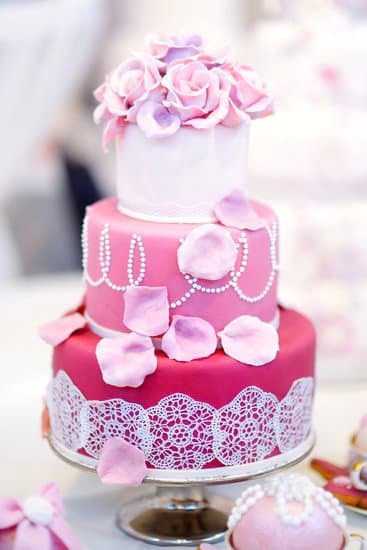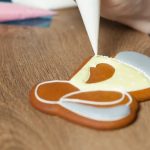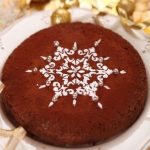Modeling paste has become an essential tool for cake decorators around the world, allowing them to create intricate and detailed designs that elevate their cake creations to new heights. This versatile medium offers endless possibilities for adding texture, dimension, and artistic flair to any cake design. Whether you’re a beginner or an experienced cake artist, understanding modeling paste and knowing how to work with it is key to achieving professional-looking results.
In this article, we’ll delve into the world of modeling paste for cake decorating. We’ll start by explaining what modeling paste is and why it’s important in the realm of cake decoration. From there, we’ll guide you through selecting the right type of modeling paste for your specific projects, as well as provide a comprehensive list of essential tools and techniques for working with this medium.
Throughout the article, we’ll provide you with a step-by-step guide on how to use modeling paste to create stunning cake decorations. We’ll also share expert tips and tricks that will help you achieve professional-looking results every time. If you’re ready to take your cake decorating game to the next level or want inspiration for your future designs, we’ve got you covered with inspiring examples of breathtaking cake designs featuring modeling paste decorations.
So whether you’re a passionate home baker or a professional cake designer looking to expand your skills repertoire, get ready to explore the endless possibilities that modeling paste offers in the world of cake decorating. With its ability to turn simple cakes into edible works of art, it’s time to elevate your creations and let your imagination run wild with this versatile and essential medium.
Understanding Modeling Paste
Modeling paste is a versatile and essential ingredient in cake decorating. It is a thick, pliable substance that can be molded and shaped into various designs and decorations for cakes. Understanding what modeling paste is and why it is important in cake decorating is crucial for achieving stunning results.
At its core, modeling paste is made up of sugar, water, gum tragacanth or tylose powder, and sometimes edible glue. The addition of the gum tragacanth or tylose powder gives the paste its strength and elasticity, allowing it to hold its shape once molded.
One of the main reasons why modeling paste is important in cake decorating is its ability to create intricate and detailed designs that cannot be easily achieved with regular icing alone. It provides a sturdy structure for creating three-dimensional decorations such as flowers, figurines, ribbons, bows, and more.
Additionally, modeling paste offers stability and durability to delicate cake decorations. It hardens when exposed to air, making it ideal for creating long-lasting embellishments that won’t collapse or lose their shape over time. This allows decorators to prepare intricate designs well in advance before they are applied to the cake.
Getting Started
When it comes to cake decorating, selecting the right modeling paste is essential for achieving the desired results. Modeling paste, also known as sugar paste or fondant, is a versatile and pliable icing that can be molded into various shapes and designs. In this section, we will explore the different types of modeling paste available and provide guidance on how to choose the right one for your cake decorating projects.
Types of Modeling Paste
There are several types of modeling paste available in the market today. The most common ones include:
- Traditional Fondant: This is the classic type of modeling paste that is used by many cake decorators. It has a smooth texture, making it easy to roll out and shape into different designs.
- Gum Paste: Gum paste is slightly firmer than traditional fondant and dries faster. It is perfect for creating intricate and delicate decorations such as flowers, bows, and lace patterns.
- Modelling Chocolate: Also known as chocolate paste or chocolate plastique, this type of modeling paste is made from melted chocolate combined with corn syrup or glucose syrup. Modelling chocolate has a more elastic texture than fondant or gum paste, which makes it great for sculpting 3D cake toppers.
Selecting the Right Modeling Paste
When selecting a modeling paste for your cake decorating project, there are a few factors to consider:
- Texture: Consider the texture you want to achieve in your decorations. If you’re looking for smooth and flawless finishes, traditional fondant might be your best bet. For intricate floral work or detailed designs, go for gum paste.
- Drying Time: If you need your decorations to dry quickly in order to assemble them onto your cake without smudging or damaging them, opt for gum paste or modelling chocolate.
- Taste: While aesthetics play a crucial role in cake decorating, taste should not be compromised. Consider the flavor preferences of your customers or guests, and choose a modeling paste that complements the flavors of your cake.
Now that you have a better understanding of the different types of modeling paste and how to select the right one for your project, let’s move on to the next section where we will discuss the essential tools and techniques for working with modeling paste.
Essential Tools and Techniques for Working with Modeling Paste
Working with modeling paste for cake decorating requires a specific set of tools and techniques to achieve the best results. Whether you are a beginner or a more experienced baker, having the right equipment and knowing how to use it will make the process much smoother and more enjoyable. Here are some essential tools and techniques to consider when working with modeling paste:
Tools
- Rolling Pin: A small, non-stick rolling pin is essential for rolling out your modeling paste to an even thickness. Look for one that is specifically designed for fondant or gum paste.
- Cutting Tools: A sharp knife or set of cutting wheels is necessary for cutting out shapes from the modeling paste. You may also want to invest in some smaller, more delicate cutters for intricate designs.
- Molds and Embossing Mats: Molds and embossing mats can add texture and dimension to your decorations. They come in various designs, such as flowers, lace patterns, or geometric shapes.
- Drying Rack: A drying rack is essential for allowing your modeling paste decorations to dry and harden properly. Look for one with multiple tiers so that you can maximize space.
Techniques
- Kneading: Before using modeling paste, it is important to knead it until it becomes soft and pliable. This will make it easier to roll out and manipulate.
- Dusting: Dust both your work surface and rolling pin with cornstarch or powdered sugar before rolling out the modeling paste. This will prevent sticking.
- Adding Color: Modeling paste can be colored using gel food coloring or dusting powders specifically made for edible use. Add a small amount at a time and knead it in until the desired color is achieved.
- Shaping and Sculpting: Modeling paste can be shaped and sculpted into various forms, including flowers, animals, or even intricate figures. Experiment with different techniques to achieve the desired design.
- Attaching to Cakes: To attach modeling paste decorations to a cake, use a small amount of water or edible glue on the back of the decoration. Gently press it onto the cake and hold in place until it adheres.
By having these essential tools and using these techniques correctly, you will be well-equipped to work with modeling paste for your cake decorating projects. Practice is key when it comes to mastering these skills, so don’t be afraid to experiment and have fun along the way.
Step-by-Step Guide
Step-by-Step Guide: Creating Stunning Cake Decorations Using Modeling Paste
When it comes to cake decorating, modeling paste is a versatile and essential tool that allows you to create stunning and intricate designs. From delicate flowers to intricate figures, modeling paste offers endless possibilities for elevating your cake decorations. In this step-by-step guide, we will walk you through the process of creating beautiful cake decorations using modeling paste.
Gather Your Materials
Before you begin working with modeling paste, make sure you have all the necessary materials on hand. This includes modeling paste in various colors, a rolling pin, non-stick surface (such as a silicone mat), edible glue or water for adhering pieces together, and a selection of tools for shaping and detailing the paste.
Prepare Your Workspace
Creating stunning cake decorations requires a clean and organized workspace. Start by clearing an area on your countertop or table where you can work comfortably. Make sure your tools are within easy reach to avoid any interruptions while working with the modeling paste.
Knead and Roll Out the Modeling Paste
Take a small piece of modeling paste and knead it in your hands until it becomes soft and pliable. Sprinkle some cornstarch or powdered sugar on your non-stick surface to prevent sticking, then use a rolling pin to roll out the paste to your desired thickness. Remember that thinner pieces will dry faster but may be more fragile, while thicker pieces will take longer to dry but will be sturdier.
Cut and Shape the Paste
Once you have rolled out your modeling paste, use various cutters or templates to cut out shapes for your decorations. You can also mold the paste by hand to create unique designs such as flowers or figurines. As you shape the paste, take care not to handle it too much as excessive handling can cause the paste to dry out and become less pliable.
Assemble and Attach
Once you have all your pieces ready, it’s time to assemble and attach them to your cake. Use edible glue or a dab of water to adhere the pieces together, ensuring they are securely attached. Pay attention to detail and take your time in positioning the decorations on the cake for the desired effect.
By following this step-by-step guide, you will be well on your way to creating stunning cake decorations using modeling paste. Remember to practice patience and precision in your work, as these qualities are key in achieving professional-looking results. So gather your materials, prepare your workspace, knead and roll out the paste, shape it into beautiful designs, and attach them onto your cake for a truly visually appealing masterpiece.
Expert Tips and Tricks for achieving professional-looking results with modeling paste
Experts in the field of cake decorating have developed a range of tips and tricks to help achieve professional-looking results when working with modeling paste. These techniques can elevate your cake decorations and make them look even more stunning. Here are some expert tips and tricks for working with modeling paste:
- Temperature Control: Modeling paste is highly sensitive to temperature, so it’s essential to maintain a cool working environment. If the room is too warm, the paste may become sticky and difficult to work with. To keep the modeling paste at an ideal temperature, you can refrigerate it for a few minutes before use or work in an air-conditioned space.
- Dusting with Cornstarch: When working with modeling paste, it’s common for it to stick to surfaces or tools. To prevent this, lightly dust your work surface or rolling pin with cornstarch before rolling out the paste. This will create a smooth surface and prevent sticking.
- Adding Tylose Powder: Tylose powder can be added to modeling paste to make it firmer and more pliable. This is particularly useful when creating intricate details or delicate decorations that need to hold their shape. Simply knead a small amount of tylose powder into the modeling paste until fully incorporated.
- Use Edible Glue: To adhere one piece of modeling paste decoration to another, use edible glue instead of water. Edible glue forms a stronger bond and ensures that your decorations stay securely in place.
- Coloring Techniques: When coloring modeling paste, start with small amounts of gel food coloring and gradually add more until you achieve the desired shade. Be cautious not to add too much coloring as it can alter the consistency and make the paste difficult to work with.
| Expert Tip | Description |
|---|---|
| Applying a thin layer of shortening to your hands or tools | This helps prevent sticking and makes it easier to shape and mold the modeling paste. |
| Allowing the modeling paste to dry overnight before painting or adding additional layers | This ensures that the paste has fully set and prevents smudging or melting of decorations. |
| Using embossing mats or texture sheets | These tools can create intricate designs and textures on your modeling paste decorations, adding depth and visual interest. |
By following these expert tips and tricks, you can achieve professional-looking results with modeling paste in your cake decorating projects. These techniques will help you create stunning and impressive cake decorations that will wow your guests.
Exploring Advanced Techniques with Modeling Paste
Once you have mastered the basic techniques of working with modeling paste, you can begin to explore more advanced techniques that will take your cake decorating to the next level. These advanced techniques allow you to create intricate and detailed designs that will impress both beginners and professionals alike.
One advanced technique you can try is using molds with your modeling paste. Molds are available in a variety of shapes and designs, allowing you to create unique decorations for your cakes. To use a mold, simply press the modeling paste into the mold, remove any excess paste, and then carefully remove the molded shape. This technique is great for creating consistent and professional-looking decorations such as flowers, leaves, or even figurines.
Another advanced technique is painting on modeling paste. Once your decoration has dried, you can use edible food coloring or edible paint to add color and detail to your design. This technique allows for endless possibilities in terms of color combinations and intricate designs. You can even use different painting techniques such as dry brushing or layering to create depth and texture in your decorations.
In addition to molds and painting, you can also experiment with embossing textures onto your modeling paste. Using embossing tools or even household items like lace or textured fabric, gently press the texture onto the surface of the paste to create beautiful patterns and designs. This technique adds an extra element of visual interest to your decorations.
| Advanced Technique | Description |
|---|---|
| Using Molds | Pressing modeling paste into molds for consistent and professional-looking decorations. |
| Painting on Modeling Paste | Adding color and detail to dried modeling paste decorations using edible food coloring or paint. |
| Embossing Textures | Using embossing tools or textured items to create patterns and designs on modeling paste. |
Remember, practice makes perfect with these advanced techniques. Don’t be afraid to experiment and try new things. With time and patience, you will be able to create stunning cake decorations that will truly impress.
Troubleshooting Common Issues When Working with Modeling Paste
Working with modeling paste can be a rewarding experience, but it is not without its challenges. In this section, we will explore some common issues that cake decorators may encounter when working with modeling paste and provide solutions and tips to help you overcome them.
One common issue is dry or cracking modeling paste. This can happen if the paste is left exposed to air for too long while working on other decorations.
To prevent this, it is important to keep your modeling paste covered with plastic wrap or stored in an airtight container when not in use. If your paste does become dry, you can try adding a small amount of vegetable shortening or glycerin and kneading it back into the paste until it becomes soft and pliable again.
Another issue that decorators often face is sticky modeling paste. This can make it difficult to work with as it sticks to your hands and tools. One way to resolve this issue is by dusting your hands and work surface with cornstarch or powdered sugar before working with the modeling paste. You can also lightly grease your tools with vegetable shortening to prevent sticking.
Color fading or bleeding is another problem that decorators may encounter when using colored modeling paste. This can happen if the colors are not properly blended into the paste or if excessive moisture comes into contact with the decorations. To avoid color fading or bleeding, ensure that you knead the coloring thoroughly into the modelled paste until evenly distributed. Additionally, avoid placing decorated cakes in humid environments or exposing them to direct sunlight for extended periods.
By being aware of these common issues and implementing these solutions and tips, you can overcome any challenges that may arise when working with modeling paste. Troubleshooting is an important skill in cake decorating, and mastering these techniques will help you achieve professional-looking results every time.
Inspiring Examples
Modeling paste is a versatile medium that opens up a world of creative possibilities in cake decorating. From simple and elegant designs to intricate and elaborate masterpieces, modeling paste allows decorators to bring their cake creations to life in stunning detail. In this section, we will showcase some inspiring examples of cake designs that feature the use of modeling paste decorations.
One stunning example is the “Garden Delight” cake, which features an array of handcrafted flowers made from modeling paste. The decorator skillfully sculpted delicate roses, daisies, and hydrangeas, creating a visually striking centerpiece for the cake. The level of detail achieved with modeling paste is truly remarkable, as each petal and leaf appears almost lifelike. This design showcases how modeling paste can be used to add dimension and elegance to any cake.
Another impressive design that highlights the versatility of modeling paste is the “Underwater Paradise” cake. The decorator used modeling paste to create realistic coral reefs, seashells, and sea creatures such as starfish and seahorses. The textured surface of the modeling paste perfectly mimics the organic shapes found in nature, adding depth and visual interest to the design. This example demonstrates how modeling paste can be used to transform a simple cake into an enchanting underwater scene.
In addition to these examples, there are countless other imaginative designs that can be achieved with modeling paste. From whimsical characters like fairies and animals to intricate lace patterns or architectural elements like columns and arches – the possibilities are truly endless. By using modeling paste, decorators can take their cakes to new heights by incorporating unique and personalized decorations.
These inspiring examples serve as a testament to the limitless creativity that can be achieved with modeling paste in cake decorating. Whether you’re just starting out or already an experienced decorator, experimenting with this versatile medium will undoubtedly spark your imagination and allow you to create stunning works of edible art.
Conclusion
In conclusion, modeling paste is a versatile and essential ingredient for cake decorating. It allows decorators to create intricate and realistic designs that elevate their cakes to a whole new level. By understanding what modeling paste is and why it is important, decorators can confidently select the right type for their projects. The use of essential tools and techniques will ensure smooth working with this medium, while expert tips and tricks will help achieve professional-looking results.
With a step-by-step guide, decorators can learn how to create stunning cake decorations using modeling paste. From simple flowers to elaborate figurines, the possibilities are endless. And for those who want to take their skills even further, exploring advanced techniques with modeling paste opens up a whole new world of creativity.
However, it’s important to note that working with modeling paste may come with its own challenges. But fear not. With troubleshooting solutions and tips, decorators can overcome common issues and continue creating beautiful cake decorations.
Finally, let’s not forget the inspiring examples showcasing stunning cake designs featuring modeling paste decorations. These displays of creativity serve as motivation and inspiration for decorators looking to push the boundaries of what they can achieve with this amazing medium.

Welcome to our cake decorating blog! My name is Destiny Flores, and I am the proud owner of a cake decorating business named Cake Karma. Our mission is to provide delicious, beautiful cakes for all occasions. We specialize in creating custom cakes that are tailored specifically to each customer’s individual needs and tastes.





